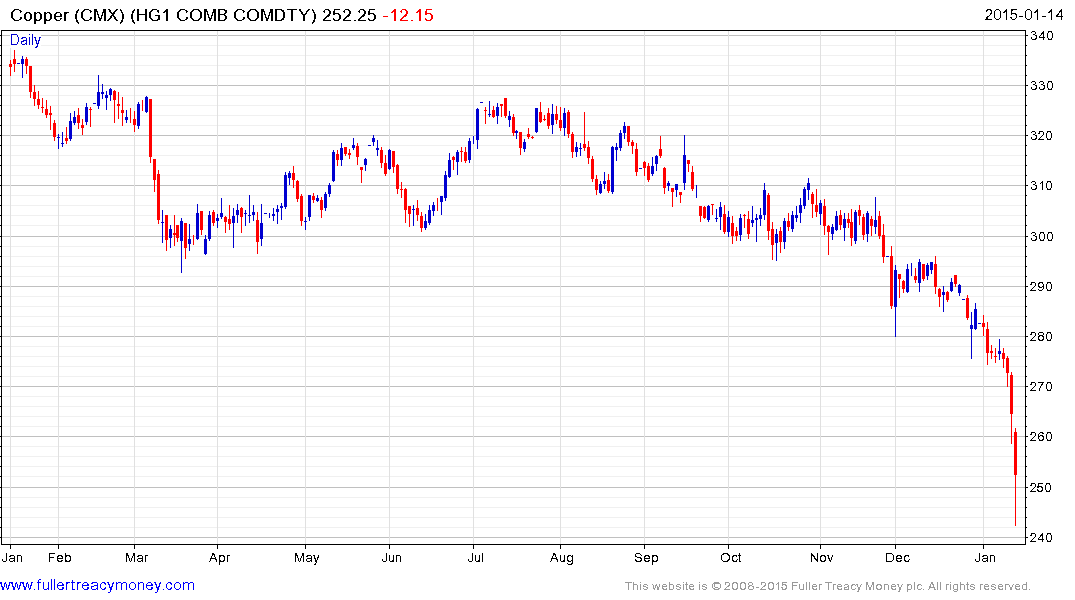Copper breakdown
This article by Kip Keen for Mineweb may be of interest to subscribers. Here is a section:
As the price falls, miners are now coming under greater scrutiny. It’s not yet a panic. By and large copper miners have enjoyed a healthy profit margin with copper over $3/lb and around $2.70/lb – if quite a bit lower – few market observers see massive issues for miners at this point. That would require a much deeper and persistent decline in the copper price.
But the falling price is starting to bite, at least a little, and there is smoke on the horizon. As others, BMO Research notes in a recent commodities overview that at $2.80/lb copper, more than 90% of miners have lesser basic cash costs (BMO’s C1). Yet add more expenses and consider miners according to BMO’s C3 cash costs and the field shrinks to 75%. The C1 midpoint, for reference, is about $1.50/lb.
So for now the copper miners are relatively safe. The spectre of widespread mine shutdowns and project delays or cancellations along with painful writedowns is not yet clearly on the horizon at recent sub-$3/lb copper prices. That would take much lower prices.
Speaking with Reuters Robert Edwards, CRU consultant on mining costs, pegged $5,000/tonne (or about $2.30/lb) as being very uncomfortable for miners. At that point pressure to close down money-losing mines and delay projects would mount.
Likewise, copper prices would have to persist in the mid-$2/lb range for several years to force major writedowns, BMO Research says. “Unlike the precious metals sector, most of the copper producers’ reserves are calculated at prices at or below spot (averaging US$2.65/lb, ranging from US$1.60/lb to US$3.30/lb), so copper prices would have to remain below US$2.65/lb for three years to warrant a notable revision.”
The above section throws into sharp relief just how much of a decline in prices would be necessary to force mines to shut down. The low price of oil may reduce production costs even further. A meeting I had with a Beijing based project manager at the International Copper Association Asia in December highlighted the fact that the Chinese government considers aluminium a more important industry than copper.
The number of people employed in aluminium production far outweighs that of copper and is one of the reasons aluminium is still used as a conductor in China. Chinese copper demand will increase as copper prices decline but as building permits slow, demand growth forecasts for the metal may have to be revised downwards

Copper extended its steep decline today but closed well off its lows. In response I tightened a stop on my short position to preserve profits. There is potential for some consolidation considering the speed of the decline but a clear upward dynamic will be required to pressure most shorts and signal a return to demand dominance.
While we tend to focus on the unweighted Continuous Commodity Index (CCI) as an indicator of commodity pricing, the CRB Index is more liquid and is more often quoted in the media. It devotes a greater weighting to energy contracts than the CCI and is swiftly approaching the area of the 2009 lows. The Index has been accelerating lower for eight consecutive weeks and the first clear upward dynamic is likely to mark a low of at least near-term significance.
Back to top


